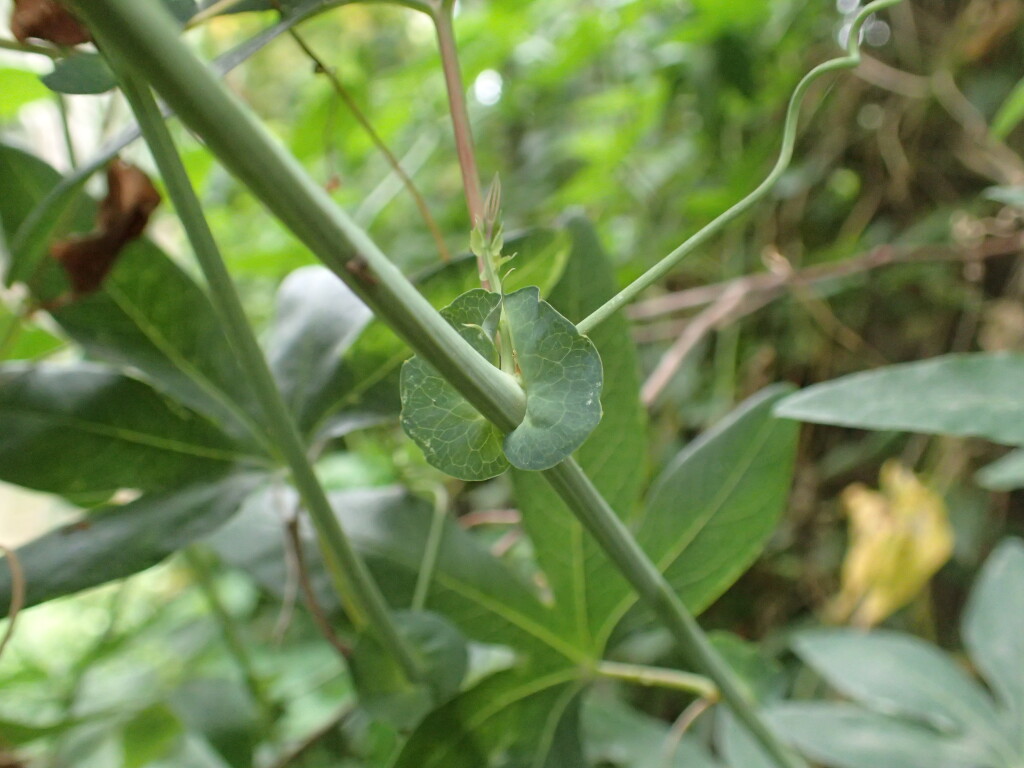Passiflora caerulea
L. Blue Passion-fruitWoody, glabrous vine. Leaves 5-lobed, up to 8 cm long and 11 cm wide; lobes acute or obtuse; margins entire, but usually with a few glands on the distal part of the lobes; petiole 2–2.5 cm long, with 2–4 (rarely 6) stalked glands; stipules leafy, more or less reniform, attached laterally. Flowers 6–10 cm across; bracts c. 2.5 cm long, green; sepals keeled, 3–4 cm long, green outside, white or pink inside, terminated by thread-like tip to 1 cm long; petals c. as long as sepals, pale pink; outer corona of threads in 4 series, purple at base, white in middle, blue at apex; inner corona membranous and white in lower third, thread-like and dark purple above; anthers and ovary subtended by stalk c. 1 cm long, ovary-stalk hardly extending further. Berry ovoid, to 6 cm long and 4 cm diam., orange-yellow. Flowers c. Aug., Dec.
MuF, GipP, EGL, HSF, VAlp. Also naturalised Qld, NSW. Native to Brazil. Cultivated in Australia for its flowers and as a stock for grafted 'edible' passion-fruit (Passiflora edulis Sims), and occasionally reported as naturalised in the suburbs of Melbourne and eastern Victoria.
Entwisle, T.J. (1996). Passifloraceae. In: Walsh, N.G.; Entwisle, T.J., Flora of Victoria Vol. 3, Dicotyledons Winteraceae to Myrtaceae, pp. 376–379. Inkata Press, Melbourne.
 Spinning
Spinning



